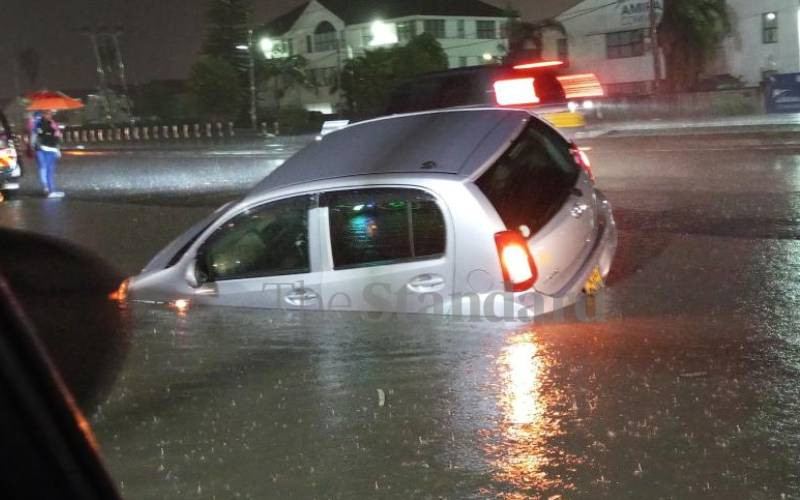
Kenya has had countless heavy rains before, but never have I witnessed humans sleep on rooftops through a night of torrents.
These are scenes some Nairobians watch on their screens, safely tucked in their chairs, as people suffer in Nyando, Budalang’i, Tana River, or North-Eastern that perennially suffer a cycle of drought and flooding. Others are the horrendous landslides such as the one witnessed in West Pokot in 2019.
The April rains have exposed Kenya’s vulnerability and inadequate disaster preparedness despite the worsening intensity and frequency of climate disasters often reported by the Intergovernmental Panel on Climate Change.
The floods carry significant implications, immediate and long-term, touching on issues of urban development, infrastructure, and climate change resilience.
With at least 49 fatalities, even high-end residences in the city were not spared. This is a good reason for equitable urban planning and development that does not exacerbate existing socio-economic disparities.
When Imenti House trended on X, it brought back some experts’ opinions on how poor land use in Nairobi causes trees to fall when it rains. Remember the deaths in Muthurwa when it rained heavily and a tree fell on a bus headed to Eastlands?
Whenever it rains heavily, the thought of the likelihood of a recurrence of such or electricity pole falling on vehicles or houses and killing people, lingers. Some experts explain that the many trees in the upper parts of Nairobi have been replaced by apartments, leaving no land to sink rainwater or trees to hold the soil.
Blame it on rapid rural-urban migration with a fast-multiplying population, but it is morally wrong to knowingly put these same lives at risk. Kenya needs to balance the tree cover and the concrete spaces to mitigate such effects of floods.
The city’s infrastructure, including drainage systems, roads, and housing, is now insufficient. Recent media reports have established rapid urbanisation without a marching sewerage system and roads.
Such acts return to haunt us. But you cannot cheat nature; either invest in resilient infrastructure that can withstand extreme weather, or plan the city with nature in mind.
The cost of flood damage, including infrastructure repairs and emergency response, has a significant burden on public funds and derails economic growth. Many families will repair their houses, and probably buy new furniture due to flooding.
Some of these better be claimed as Loss and Damage from the global purse, but meanwhile, investing in flood risk management and resilience measures can mitigate these economic losses.
Amid the flooding, Earth Day 2024 came early in the week, themed “Planet vs Plastics”.
The plastic problem is another flooding culprit, as they clog drainages. This can be blamed on inadequate waste management going by the United Nations Environment Programme’s assertion that Africa only collects 55 per cent of its urban waste compared to global average of 68 per cent. Inadequate infrastructure exacerbates plastic pollution.
While Kenya still experiences pollution despite ban on single-use plastic, it is a global issue requiring collective effort.
Major corporations like Coca-Cola, Nestlé, and Unilever may have committed to using more sustainable packaging and reducing plastic waste, but more action is needed from more actors.
In 2018, 250 of the world’s largest brands pledged to eradicate single-use plastics by 2025. These need to be actualised.
The Earth Day 2024 was therefore a reminder that we must protect the planet and its resources for future generations.
Meanwhile, we must properly implement policies that encourage proper urban land use planning where the climate crisis is now showing its wrath more.
-The writer champions climate justice. lynno16@gmail.com